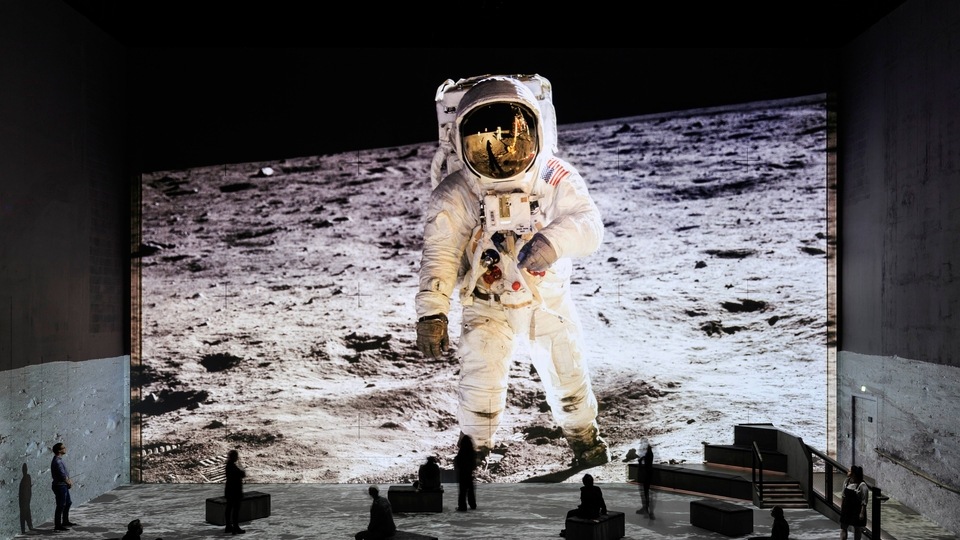Yes, We do need another moonshot, or five
More nations taking the trip makes this a truly global endeavor.

If all goes well, Japan will become at least the fourth country with a moon mission this year, making lunar exploration more active than it's been in five decades. The renaissance is being led by nations not usually considered leaders of the space race, which is an important development for the entire planet.
In truth, launching a large tin can at the moon in the hopes of sticking the landing is challenging and fun, but it's not a money maker. Anyone hoping to spin a dime is better off staying grounded and finding ways to get AI to serve up ads or create cat videos. Thankfully, human endeavor isn't driven solely by profits. Also read: Elon Musk's Starlink, Jeff Bezos' Kuiper to get rival as EU seeks satellite offers in AI race
Icky as it sounds, great adventures are more often driven by nationalism and imperial conquest. India won the latest round in August by being the first to land a spacecraft near the moon's south pole. Tellingly, it managed the feat just days after superpower Russia failed at the same task. Since we're keeping score, the South Asian nation now becomes the second country to have a currently operational rover on the moon behind China. On Thursday morning, Japan's H2-A rocket launch, already delayed by weather, will carry what could become that country's first lunar lander.(1)
For space nerds, this is the most-exciting time since the 1960s when the Soviet Union and the US traded rockets and the great Space Race became a proxy for the Cold War. It may just be a coincidence that the Americans won the battle to land humans on the moon and were also victorious in the war, but we mustn't overlook the reality that the nation with superior technology — much of it developed in direct response to the rivalry — has remained the strongest industrial and military power ever since.
All up, we have at least five nations — China, Japan, South Korea, Israel, and Russia — vying to put an object on the surface, a far tougher feet than merely circling the moon and taking photos. The US has plans to send humans back for the first time since 1972 and set up a base there.
Now, it's time for new nations to get into the game, and benefit from their own moonshot programs. It won't be cheap, and there'll be plenty of failures. Thanks to Japan's entry into the race, Mitsubishi Heavy Industries Ltd. is now a space company. The revenue from launching satellites and throwing more stuff at the moon can be ploughed back into everything from control systems to electronic components, which benefits its other business including aviation and advanced materials.
South Korea is also queuing up. Hyundai Motor Co. in April announced it's teaming up with major Korean research institutes and expects to send a rover to the moon within four years. To get the job done, the auto maker will deploy technologies it's developing including robotics, LiDAR, solar charging, autonomous driving and radiation shielding. Then there's Israel, with non-profit SpaceIL planning to send its Beresheet 2 for a second attempt at a moon landing by 2025 after Beresheet 1 crashed on the surface in 2019. That project was cast into jeopardy after key donors pulled their investment in May.
This renewed interest is stoking fears of increased rivalry and another arms race. Those are reasonable concerns, yet something more important is underway: A new series of moonshots means a whole new set of technologies to be developed, and by nations new to the venture.
We cannot be so naive as to pretend that space programs and weapons advancement are disconnected. The Soviets were the first to put a man in orbit because, in part, it had developed better rockets for delivering nuclear warheads across the planet. The US caught and surpassed its rival thanks to superiority in realms including software, integrated circuits and materials science.
Many of those technologies were later deployed in Vietnam and subsequent wars, and today it's near impossible to delineate the global aerospace and defense industries. Lockheed Propulsion Co., which built key motors used in the Apollo program, and the Martin Company, responsible for the Gemini program's Titan rockets have since joined to form one of the world's premier defense contractors.
Although a lot of the knowledge gleaned from enabling just a dozen people to walk on the moon has in the past been used for military applications, much more found civilian use. Modern digital imaging, including cameras used in smartphones, is a descendent of early NASA research. Dozens of technologies, from solar cells and water filtration to rocket and jet propulsion were developed or finetuned with NASA money. This effort, coming directly from the White House and John F. Kennedy's famous 1962 speech, gave US industry a huge lead that it would enjoy for decades to come.
While China's lunar landing shows the prowess of its aeronautics sector, India's success is all the more remarkable for its minuscule budget of around $75 million. Not that the Chinese are profligate either, but the country has an $8 billion space budget that's second only to the US.
Israel's funding troubles highlight the first challenge in getting rockets off the ground: money. But as governments, coupled with research organizations and commercial clients, find the cash to make these projects happen, we face the very real prospect of moonshots being a truly global venture. That alone is an achievement worth celebrating.
Catch all the Latest Tech News, Mobile News, Laptop News, Gaming news, Wearables News , How To News, also keep up with us on Whatsapp channel,Twitter, Facebook, Google News, and Instagram. For our latest videos, subscribe to our YouTube channel.

























